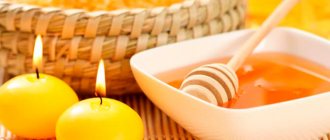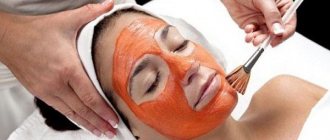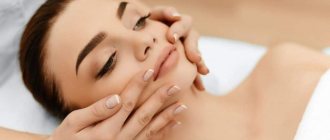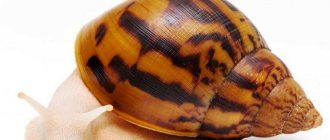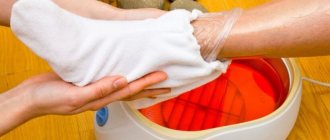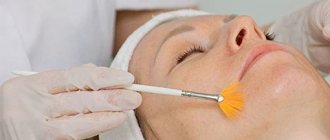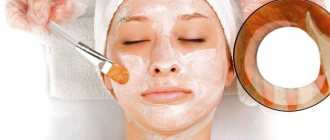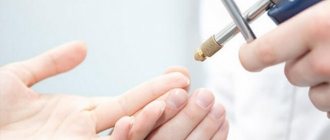Clear skin, reduction of inflammation and launch of regeneration processes - all this is the result of peeling carried out at home or in a specialist’s office. If you decide to set up a beauty salon at home, I advise you to use professional formulations for deep or superficial cleansing.
Where did the concept itself come from? This word comes from peel, which in English means “remove”, “scrape”. These verbs are well suited to describe the processes that occur with the skin during its treatment - exfoliation of dead cells, removal of the upper stratum corneum, literally renewal and enhancement of regeneration - that is, natural restoration.
This method of self-care was known to the ancient Egyptians. It was also used in Asia. The basis was wine and tartaric acid, which is still used today as part of special products. It has a strong antioxidant effect, helps lighten age spots and eliminate signs of photoaging.
Peeling has been around for several hundred years, and the popularity of this procedure is only growing. The use of many formulations and techniques for different skin types helps solve many dermatological problems:
- eliminate hyperpigmentation;
- relieve inflammation and cure acne;
- slow down the aging process and reduce facial wrinkles;
- eliminate dryness and tightness;
- even out the skin and make acne scars less noticeable.
What types of peeling exist?
There are several classifications. According to the first procedure, they are divided according to the degree of impact on the skin.
- Superficial
– exfoliate dead particles of the stratum corneum. - Median
- changes occur at the level of the outer layer and capillary dermis. - Deep
- the reticular or reticular layer of the epidermis is renewed.
Peels also differ in the method of exposure. They can be laser, chemical, mechanical. All products used at home can be divided into two categories - for mechanical and chemical removal of dead cells. The first includes all kinds of scrubs and gommages containing natural or synthetic particles (polyethylene granules) that effectively remove keratinized scales. The second includes products with acids and enzymes - active chemical components that affect both the superficial and deep layers of the skin.
There are also options for the body - both home and professional. They also launch renewal and restoration processes, exfoliate dead scales, and activate blood microcirculation. After application, the special compositions are rubbed with soft circular movements, performing a pleasant massage. Homemade recipes are also possible here - using sea salt, coffee, oatmeal. However, the effectiveness of such procedures is much lower than when using special care products. In addition, there is a risk of an allergic reaction.
Story
Chemical peeling is one of the oldest cosmetic procedures with successive stages of practical development and deepening of knowledge in different historical periods. The technique has made a transition to the use of effective, safe, less traumatic and “year-round” drugs.
There is a certain sequence in the study of peelings.
- Ancient Egypt - the use of milk and fractional mineral, fruit, sand fragments in special compositions.
- Middle Ages - the use of substances from grapes and citrus fruits for rejuvenation and whitening of the entire body.
- 1883 - German physician Paul Gerzon Unna discovered the effectiveness of TCA, salicylic acid, resorcinol and phenol in the treatment of age spots and post-acne manifestations.
- 1974 - Eugene Scott unveiled the use of alpha hydroxy acids, Professor Albert Kligman discovered the healing properties of vitamin A for the skin.
- The end of the 90s marked the beginning of widespread chemical peeling in Russia.
How often can you exfoliate?
The frequency of procedures depends on what effect you want to achieve - directly on the dermis or on the epidermis.
- The least traumatic option, when only the stratum corneum is affected, is recommended to be done several times a year. The result is renewal and cleansing, normalization of the activity of the sebaceous glands and the prevention of acne.
- The median ones are a little more traumatic because they contribute to the destruction of all layers of the epidermis, including the capillary dermis. I advise you to do them no more than 2 times a year.
- Deep exposure is possible only once a year with a break of twelve months before the next similar procedure.
Scrub recipes for cellulite
Anti-cellulite sugar mixtures are simple to prepare. There are many recipes for making them.
- Mix 300 g of sugar with 0.5 tbsp. liquid soap, you can use shower gel. Pour in ¼ tbsp. carrier oil, such as olive or coconut, to moisturize the skin. You can use the product in the bath or shower. The remainder of the mixture should be stored in a cool, dark place.
- Mix 100 g of sugar with 50 g of black clay and 1 tbsp. l. honey Add grapefruit essential oil to the resulting mixture, 5-8 drops will be enough. Rub the product onto the body and massage for a while. Particular attention should be paid to areas affected by cellulite.
- Coffee peeling. Brew 80 g of coffee in 75-100 ml of boiling water, add 0.5 tbsp. sugar and 15 ml of base oil. Olive is good. The coffee product has a short shelf life, only 4 days, so it is advisable to use it at once.
Here are some tips on how to exfoliate at home:
- Be careful - monitor the intensity of the impact. The main thing is not to overdo it. If in a specialist’s office everything is monitored by a professional who knows about possible risks and ways to prevent them, then in your home only you are responsible for the result. All products used for this process differ in the method of application. Some should be left on the face for a while and then washed off with water, others should be gently massaged into the skin, etc. You should not rub your face too much or forget that you applied the composition and walk with it for an hour instead of the stated fifteen minutes.
- Do not forget that peelings should be used at home no more than once a week and only on the recommendation of a specialist. Do not shorten the intervals between procedures, even if it seems to you that there is no effect and repeated exposure is necessary.
- Be especially careful with problem areas. If you have increased pigmentation or rosacea on the wings of your nose or cheeks, you should not apply as much product to them as possible or massage them more actively. This will cause even more irritation and damage the skin.
- Be sure to monitor the reaction. This is especially true for homemade products, which I will talk about further, since natural ingredients can cause a severe allergic reaction. First, wash your skin thoroughly and degrease your skin; do not apply foundation around your eyes. If after a few seconds your whole face is “burning”, do not tolerate it, but urgently wash off what you applied. Professional products may cause slight tingling and stinging, but this is a normal reaction, unlike the one described above.
- Do not forget about proper care after completion of the procedure. You cannot rely only on miraculous properties. I advise you to use neutralizers, special tonics, masks that will help the skin recover after exposure to the active components of the composition, creams with SPF of at least 32 in summer and spring, 15 in autumn and winter.
How to make peeling for face or body at home? For these purposes, fresh fruits, dairy products, coarse salt, gelatin and activated carbon are most often used. Below I will give some recipes:
- Skin renewal with papaya
The enzyme contained in this fruit effectively removes dead cells and starts recovery processes. You will need one ripe fruit, a packet of gelatin, a few tablespoons of water (preferably mineral). Gelatin and water are combined with fruit juice and brought to a boil over low heat. After cooling and thickening, the mixture is applied to the face and left for 15-20 minutes.
- With tomato and lime
This recipe also uses gelatin. It is dissolved in water, lime is squeezed into the resulting base - one tablespoon of juice is enough. The mixture is then heated until thickened. The peeled tomato is pureed with a blender and added to the remaining ingredients, after which the resulting composition is left to thicken for half an hour. This foundation should be kept on the skin for 15-25 minutes.
- With cucumber, aloe and green tea
The seeds are removed from the peeled cucumber. The pulp is crushed with a blender to a puree and passed through cheesecloth to separate the juice. At the same time, tea is brewed and infused - we will need half a glass. Gelatin is again used as a base. This time it is poured not with water, but with tea, after which the mixture is heated until thick and combined with cucumber juice and aloe gel. The base must cool down. Then it can be applied to the face for 20-30 minutes - no more.
Homemade recipes seem to be universal because they contain natural ingredients. However, there is always a risk of allergic reactions and severe skin irritation after using one of these peels. I advise you to use only what has been tested and approved by leading cosmetologists and dermatologists - liposomal care products. The difference is greater efficiency, the possibility of using even to renew sensitive skin, the use of herbal extracts, vitamins and fruit acids.
Is it necessary to undergo examination before a massage session?
If we are talking about pain in the back, lower back, cervical spine, and so on, then consultation with an orthopedic surgeon, neurologist, or physiotherapist is really necessary. Because in this case, massage is one of the methods of treatment, in addition to others (taking medications, acupuncture, physiotherapy, exercise therapy). In addition, you will have to take pictures and establish a diagnosis, which will allow you to most fully approach treatment issues. Only a doctor, based on the collected medical history and in the absence of contraindications, can prescribe a massage procedure. Naturally, a doctor’s consultation and an x-ray are necessary for injuries, including sports ones.
As for cosmetic types of massages, they also have their contraindications. The absolute ones include heart failure, thrombophlebitis, atherosclerosis, thrombosis, ischemia, aortic aneurysm, active form of tuberculosis, HIV, oncology, osteomyelitis. As well as high blood pressure, high temperature, chronic or viral disease in the active phase.
Who are contraindicated for home peelings for face and body?
You cannot try the miraculous properties of papaya, aloe and lime, as well as other homemade remedies, if you:
- skin diseases in the acute stage;
- herpes;
- increased sensitivity;
- microtraumas, wounds and other tissue damage.
Finally, I will give some general recommendations:
- Mechanical impact on the skin should not be excessively intense.
- Such procedures are not recommended for rosacea and profuse rashes on the face.
- If you decide to use a product you made yourself, test it on the skin of your wrist or behind your ear to rule out a possible allergic reaction to the components of the mixture.
If the muscles are “clogged” and pain is felt during massage of these areas, is this how it should be?
If you came not for a relaxing massage, but for a sports or therapeutic massage, then unpleasant painful sensations are, of course, possible. Since pain can occur due to compression of a certain problem area of muscle tissue. In this case, a problem area must be understood as some fragment or even a whole muscle that is in a contracted/tense state. During the rest period, when you are resting (in this case, lying on a massage table), such a muscle is not relaxed, therefore, blood circulation, the supply of nutrients and oxygen are disrupted, and metabolic processes are disrupted. The muscle seems to be in good shape all the time, “at work.” In order to relax her, you need to make an effort. Of course, the pain that the client may experience during the massage should be tolerable. That is why it is necessary to talk to a specialist about all your sensations, since a massage session is a joint work.
Let's sum it up
The best option would be to use liposomal peels - they do not cause irritation and are maximum effective due to the method of delivery of active substances - transdermal transfer of active ingredients.
Which product should I choose? I recommend using the table.
| Problem | Solution | Means |
| Relief leveling | Mandelic acid starts the process of collagen production, renewing cells, smoothing and evening out the skin. | Quick view 30 mlMulti-acid peeling with succinic acid 5% (pH 3.5)1 220 ₽ Add to cart Checkout |
| Effective cleansing and inflammation relief | Malic acid penetrates into the deep layers, eliminating the cause of acne and suppressing inflammatory processes. | Quick view 30 mlPeeling LACTOBIONIC GREEN 5% (pH 2.6)1 900 ₽ Add to cart Checkout |
| Smoothing out wrinkles | Fruit and succinic acids stimulate collagen synthesis, promote skin renewal and smooth out surface wrinkles. | Quick view 30 mlMulti-acid peeling with succinic acid 5% (pH 3.5)1 220 ₽ Add to cart Checkout |
| Reduction of pigmentation | Tartaric acid eliminates the manifestations of local hyperpigmentation, effectively whitening the affected areas and lightening spots. | Quick view 30 ml |
results
Body peeling is an effective and very pleasant procedure that allows you to renew and improve the surface of the skin.
Its implementation as part of figure correction programs increases their effectiveness: active substances penetrate deeper into the skin, promoting its smoothness, even color, and elasticity. The additional components included in the peelings will relieve many aesthetic problems: acne, excessive oily skin, smooth out stretch marks, and relieve swelling.
Body peeling is recommended before sugaring and waxing sessions - this will help avoid ingrown hairs, and peeling a few days before vacation will make the tan more even.
Salons and clinics in your city offering peeling services, as well as other body skin care procedures, you can visit our portal.
WHAT TO COOK FROM
Body peeling can be prepared literally from what you can find in the refrigerator. Such exfoliants benefit from the guaranteed absence of preservatives and dyes.
| INDICATIONS | COMPONENTS |
| Dry skin |
|
| Cellulite, spider veins | Coffee grounds |
| Stress, tense muscles | Sea salt |
| Sensitive skin | Oatmeal |
| Freckles, pigmentation | Rice ground in a coffee grinder |
Indications
- Biological aging - expression lines and deep age wrinkles, dull complexion, thinning, peeling and decreased elasticity of the skin.
- Photoaging is a disorder of the relief of the skin with hyperpigmentation, folds and vascular manifestations.
- Prevention of premature aging.
- Oily, seborrheic skin, acne, post-acne, congestive spots, enlarged pores.
- Dry skin, facial ptosis and signs of sagging.
- Pigment spots - freckles, chloasma, melasma, lentigo, post-inflammatory formations.
- Stretch marks, scars on the body - décolleté, abdomen, thighs.
- Keratomas, papillomas, molluscum contagiosum as part of combination therapy.
- Hyperkeratosis is a thickening of the top layer of skin.
- Preparation for invasive methods of exposure - injection procedures, resurfacing and plastic surgery.
- General disorders of skin quality and appearance in the facial area - periorbital area, cheeks, zygomatic area, forehead and body, neck, décolleté, arms and hands, shoulders, legs, back, abdomen, buttocks.
Pre-peeling preparation
Before performing a mid-peel, specialized care is required 1-2 months before the procedure.
- Creams with fruit acids are applied at night 14 days before peeling and sunscreen.
- A treatment containing 5-12% glycolic and kojic acids is used in an amount of 3-4 procedures with an interval of 10-14 days to exfoliate and smooth the stratum corneum.
- Drugs are used to reduce the risk of age spots (vitamin C, topical retinoids, azelaic acid).
- Conditions for limiting exposure to the sun and solarium are observed.
- A course of antiviral therapy is prescribed if there is a tendency to herpetic infection.
- Vessels are prepared by taking antioxidant and angioprotective components after 55 years (for example, Troxevasin, Troxerutin).
No specific preparation is required before performing surface peeling. Sometimes serums and creams with a low acid content (6-12%) and high pH-3-4 are prescribed for 7-10 days.
Side effects and complications
Predictable.
- Erythema is redness of the skin, which depends on the concentration of substances and lasts up to 2-3 hours with superficial peeling, up to 5 days with medium peeling, and up to 2 months with deep peeling.
- Exfoliation is the removal of a thin layer of dead cells. It can be small-plate for superficial peeling and large-plate for medium peeling. Duration varies from 3 to 7 days.
- Swelling after chemical peeling is a natural reaction to a violation of the integrity of the skin and an increase in capillary permeability during medium and deep peelings. Stores for 2 to 4 days.
- Changes in skin color (darkening) are response mechanisms due to peeling, which lasts up to 14 days.
- Sensitivity is a manifestation of skin reflexes to the penetration of products, which persists for 14 days.
Undesirable (as a result of improper post-procedure care, individual characteristics or after poor-quality implementation of the technique). They are divided into immediate (up to 2 weeks after the procedure) and delayed (from 3 to 10 weeks).
- Exacerbation of acne is an inflammatory reaction characteristic of oily skin. Antibiotics are prescribed to suppress the processes.
- Activation of herpetic infection - occurs in the absence of a preventive course before peelings. If a rash occurs, antiviral medications are recommended.
- The addition of a secondary infection is manifested by pustular rashes due to non-compliance with antiseptic rules and a proper recovery period. Local or systemic antibacterial agents are used.
- Allergic reaction - to prevent the appearance of rashes, a test test is first carried out on a limited area of the skin to identify possible manifestations. When they occur, antihistamines (for example, Erius) are used.
- Persistent redness of the skin - occurs when blood vessels are dilated after deep peeling. In this case, it is important to follow the necessary recommendations after the sessions.
- Hyperpigmentation is the activation of cells that produce pigment (melanin). In this case, pre-peel preparation and the use of retinoic and phenol peels are important, as well as mesotherapy to reduce age spots.
- The demarcation line is a clear boundary between the treated and undamaged areas of the skin. Leveled by Jessner peeling.
- Scars (hypertrophic, keloid) - appear with medium and deep chemical peels. Corrected by laser exposure, ozone therapy, electrophoresis with lidase.
Beneficial features
Facial scrubs can be found in women much more often than for the body. Well, in vain. You can make an effective peeling and cleanse the skin of the body using natural homemade products or ready-made ones, which are so common on the cosmetics market. From such procedures you can get silky and soft skin and help your body cleanse itself of toxins through unblocked pores.
Thanks to the use of scrubs, the following goals are also achieved:
- reduction of cellulite in the initial stages;
- imparting firmness and elasticity;
- reduction of stretch marks;
- removal of sebum, dirt, skin cells that have already died or become keratinized.
Scrubs are usually done at the beginning of such procedures: wraps, masks, massage. After a good cleansing of the skin before such procedures, their effect is enhanced and the effect occurs faster. Special brushes, mittens, and shower heads help with scrubbing.
Tactics of procedures
The protocol for the sessions depends on the type of substance, indication and initial condition of the skin. There is a sequence of peelings
- Preparatory stage (pre-peeling care, examination of the affected area, taking an anamnesis to identify possible contraindications and complications).
- Gentle cleansing and degreasing of the skin, protecting eyes and lips with a nourishing cream.
- Selection and application of 1-2 ml of the composition in the form of a gel, mask or solution, depending on the form of release and the effect on the desired areas (for example, a mask-tablet for serums). Brushes, cotton pads or swabs are used for processing.
- Consistent and uniform distribution of peeling in the form of 1-3 layers across zones: forehead, nose, temporal region, bony edge of the orbit, cheeks, chin, neck, central and fixed facial parts.
- Using a fan or fan for cooling when pain and discomfort occurs.
- Time delay - depends on the depth of peeling and the area of the treated area (up to 2 minutes in the eye area, from 15 minutes to 2 hours in the face and body area).
- Controlling the reactive state of the skin (redness, swelling, burning, soreness).
- Neutralization with a special solution containing alkali for 1-3 minutes to moisturize and tone the skin (for example, neutralizer lotion).
- Removing peeling. For superficial peeling, the solution is washed off immediately after the skin reaction appears or after a few hours (for example, yellow peeling).
- Prescription of post-peel care for protection, nutrition and hydration (for example, sunscreen and age spots 45).
